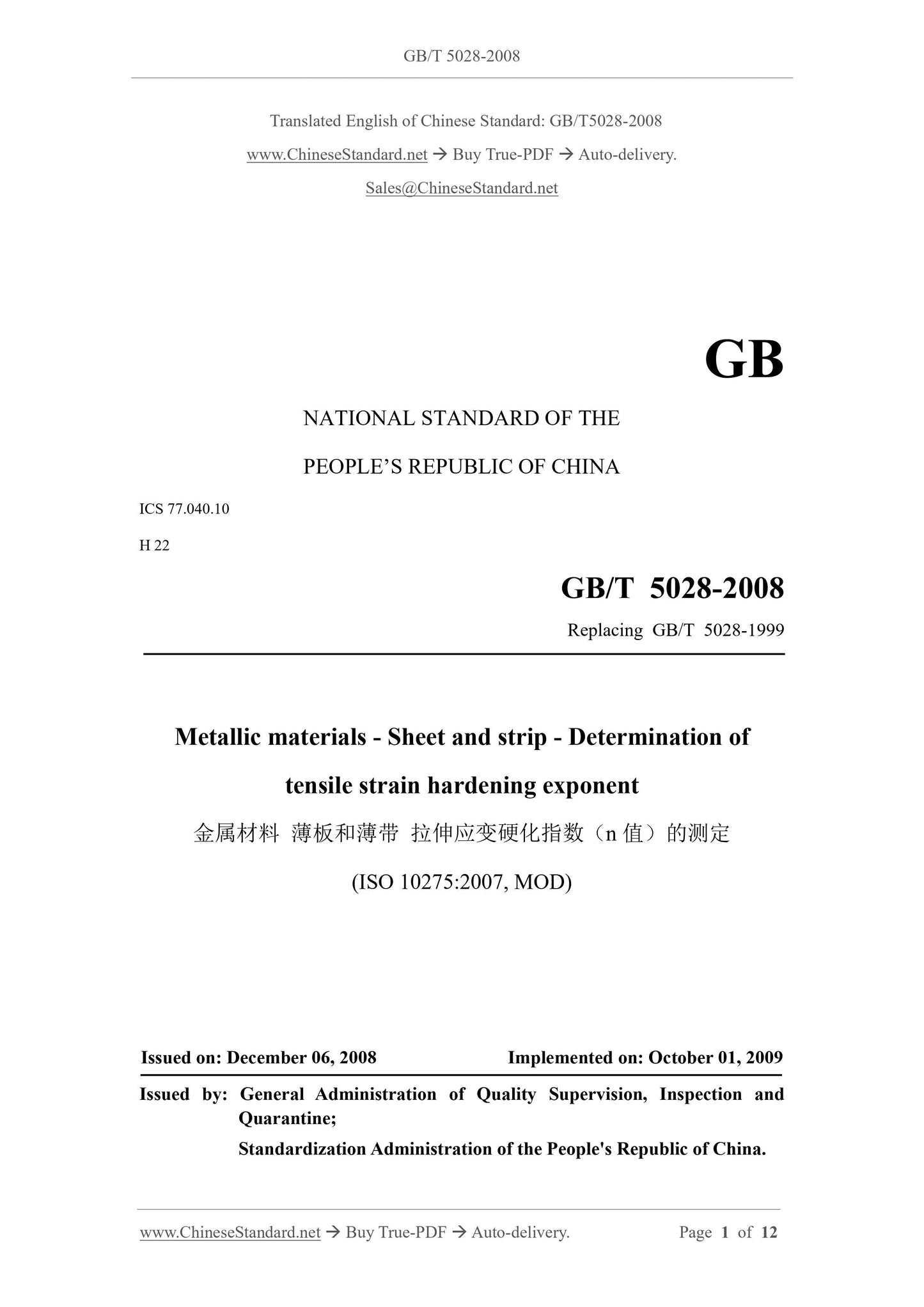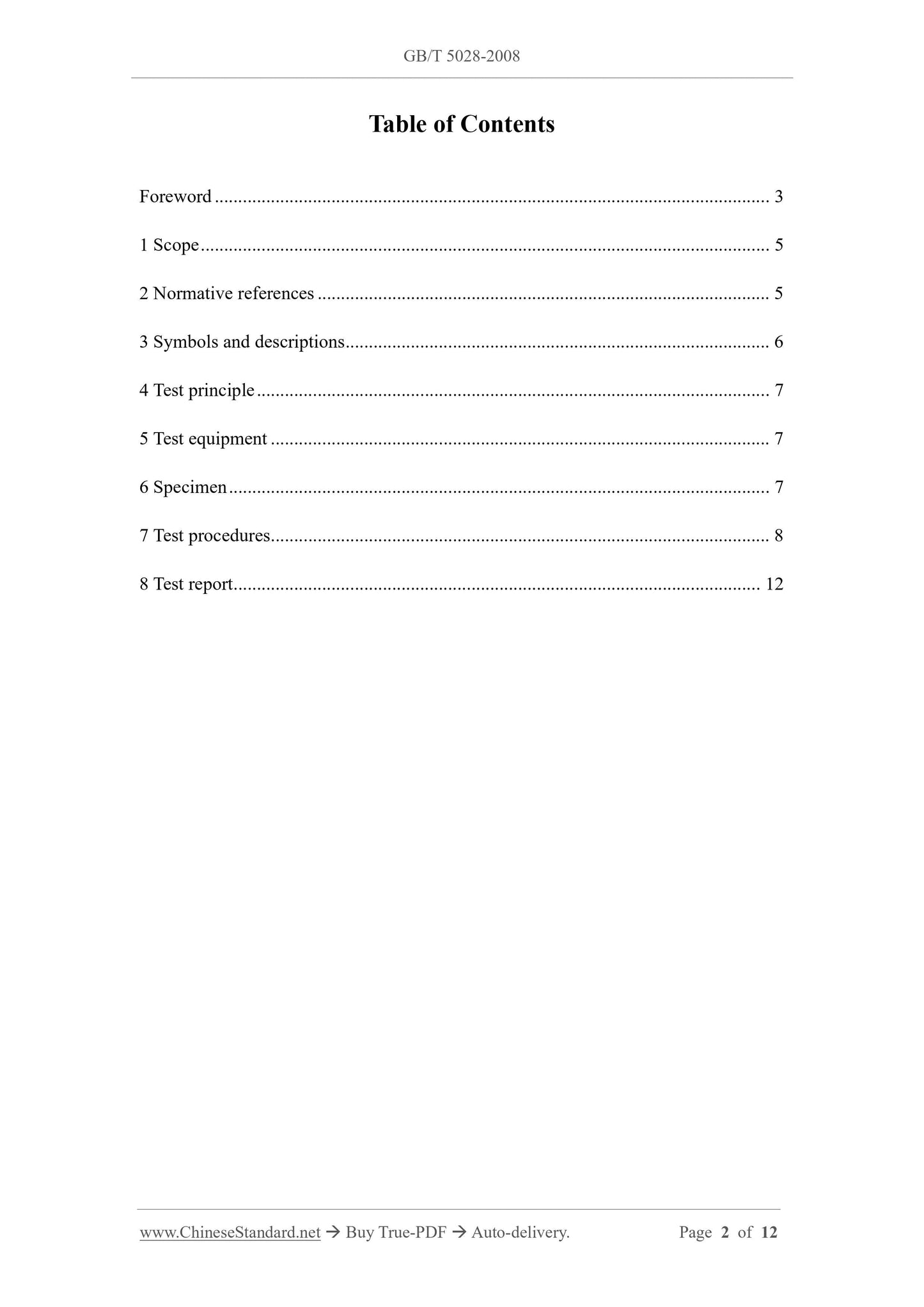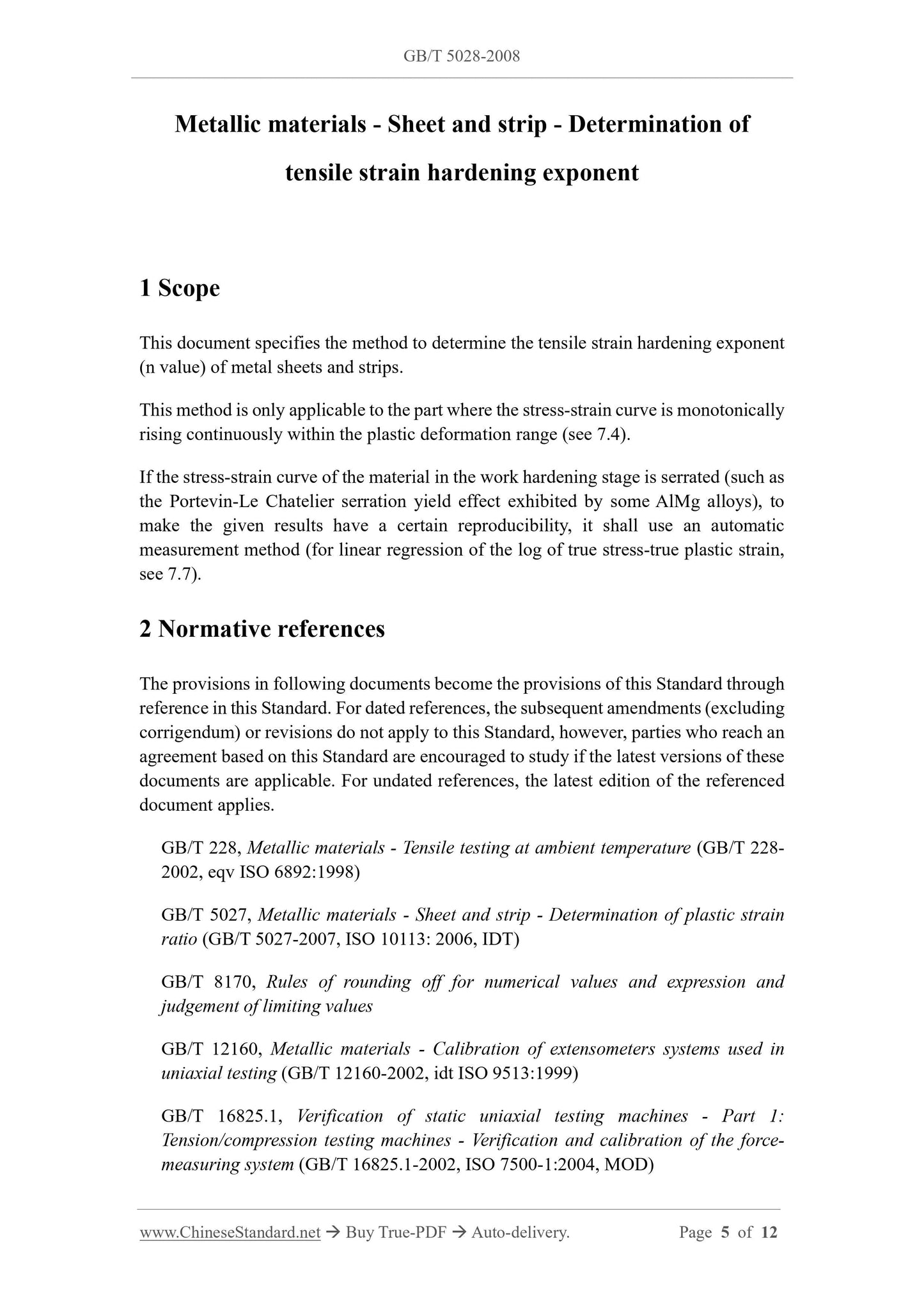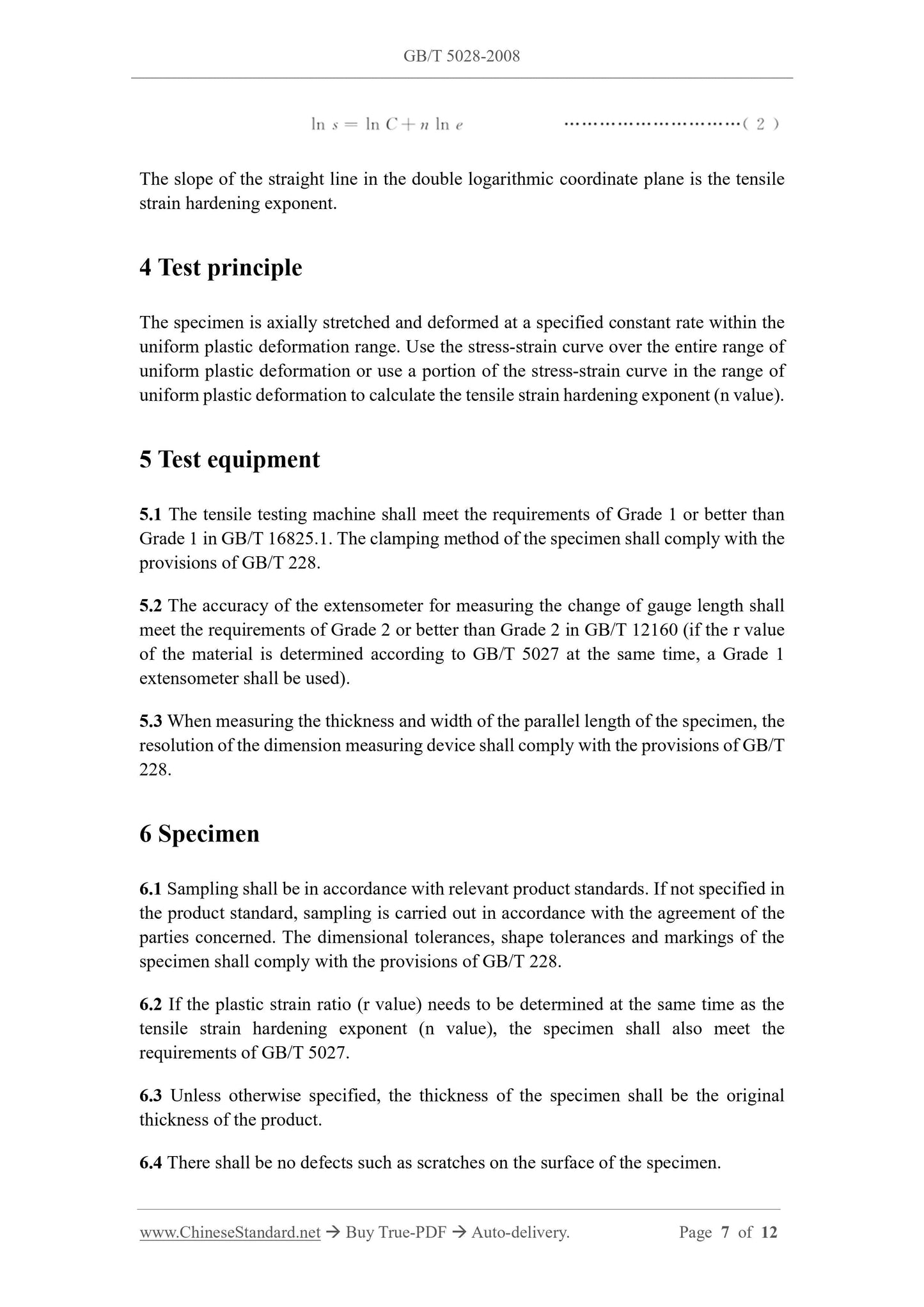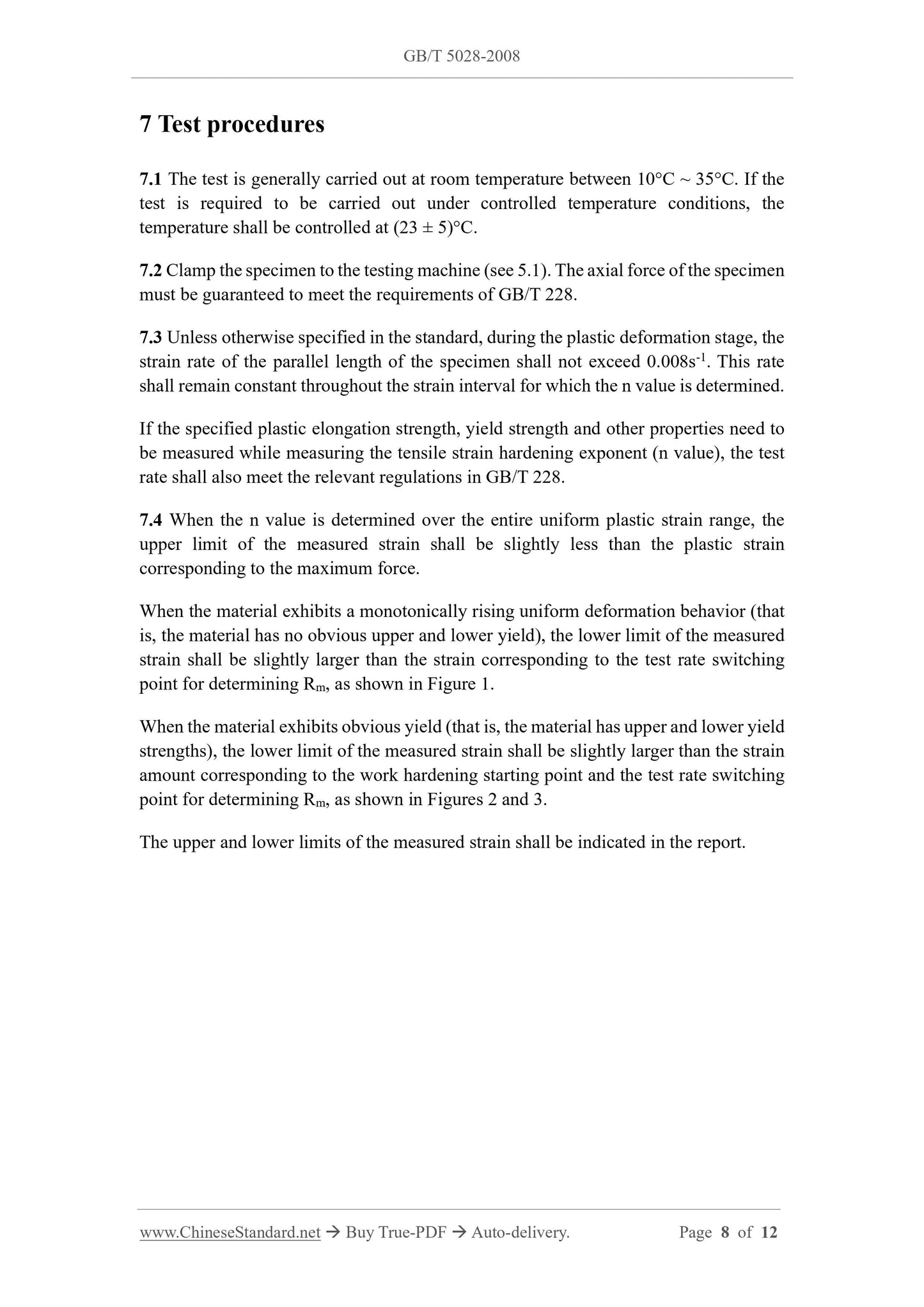1
/
of
5
www.ChineseStandard.us -- Field Test Asia Pte. Ltd.
GB/T 5028-2008 English PDF (GB/T5028-2008)
GB/T 5028-2008 English PDF (GB/T5028-2008)
Regular price
$170.00
Regular price
Sale price
$170.00
Unit price
/
per
Shipping calculated at checkout.
Couldn't load pickup availability
GB/T 5028-2008: Metallic materials -- Sheet and strip -- Determination of tensile strain hardening exponent
Delivery: 9 seconds. Download (and Email) true-PDF + Invoice.Get Quotation: Click GB/T 5028-2008 (Self-service in 1-minute)
Newer / historical versions: GB/T 5028-2008
Preview True-PDF
Scope
This document specifies the method to determine the tensile strain hardening exponent(n value) of metal sheets and strips.
This method is only applicable to the part where the stress-strain curve is monotonically
rising continuously within the plastic deformation range (see 7.4).
If the stress-strain curve of the material in the work hardening stage is serrated (such as
the Portevin-Le Chatelier serration yield effect exhibited by some AlMg alloys), to
make the given results have a certain reproducibility, it shall use an automatic
measurement method (for linear regression of the log of true stress-true plastic strain,
see 7.7).
Basic Data
| Standard ID | GB/T 5028-2008 (GB/T5028-2008) |
| Description (Translated English) | Metallic materials -- Sheet and strip -- Determination of tensile strain hardening exponent |
| Sector / Industry | National Standard (Recommended) |
| Classification of Chinese Standard | H22 |
| Classification of International Standard | 77.040.10 |
| Word Count Estimation | 9,972 |
| Date of Issue | 2008-12-06 |
| Date of Implementation | 2009-10-01 |
| Older Standard (superseded by this standard) | GB/T 5028-1999 |
| Quoted Standard | GB/T 228; GB/T 5027; GB/T 8170; GB/T 12160; GB/T 16825.1 |
| Adopted Standard | ISO 10275-2007, MOD |
| Regulation (derived from) | National Standard Approval Announcement 2008 No.19 (Total No.132) |
| Issuing agency(ies) | General Administration of Quality Supervision, Inspection and Quarantine of the People's Republic of China, Standardization Administration of the People's Republic of China |
| Summary | This standard specifies the metal sheet and strip tensile strain hardening exponent (n value) measurement method. This method is only applicable to plastic deformation range of stress-strain curves showed a continuous rise monotonically part (see 7. 4). If the material hardening stage stress-strain curve is serrated (eg certain AlMg alloy exhibits a serrated Portevin-Le Chatelier effect) as a result given that a certain repeatability of the automatic measuring method (on the true stress-true plastic strain logarithmic linear regression, see 7. 7). |
Share
